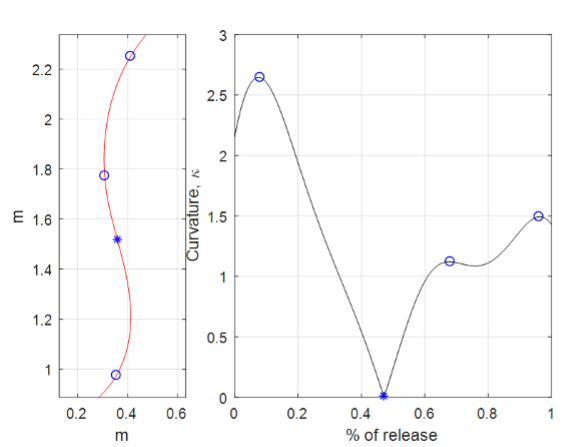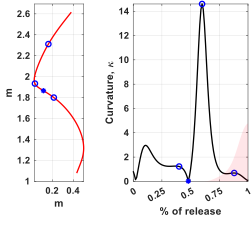In basketball, mastering the art of shooting involves more than just aiming and firing; it requires understanding and optimizing every component of the shot process. One such critical component is ‘Release Curvature,’ a ShotMetric that measures the curvature of the ball’s path from the set point to the moment it leaves their hand. Our research sheds light on why this ShotMetric is essential for controlling shot distance effectively.
WHAT IS RELEASE CURVATURE?
Release Curvature quantifies the deviation of the basketball’s trajectory from a straight line during its final moments in a player’s hands. Traditional coaching often emphasizes a smooth, uninterrupted motion; however, our research indicates that a more pronounced change in direction, resulting in a straighter path post-set point, actually enhances distance control.
This finding challenges long-standing beliefs and suggests that a narrow ‘S curve,’ though it may generate power, can lead to inconsistencies in shooting accuracy.
The physics behind Release Curvature reveal that the way a player transitions from the set point to the release can have a profound impact on where the ball ends up. By analyzing the movement patterns that lead to different curvatures, we can begin to understand which techniques optimize shot precision and which might undermine it.

An example of poor Release Curvature. The graphic on the left is a profile view of the basketball while being shot. the graphic on the right is a representation of how much the path of the ball was curving throughout that motion. This smooth S curve resulted in a significant curve of the path on release.
WHY FOCUS ON RELEASE CURVATURE?
Our findings demonstrate a significant correlation between a player’s ability to minimize curvature at a critical phase of their shot and their overall distance control. This makes Release Curvature an invaluable metric for coaches and analysts, providing a deeper insight into a player’s shooting mechanics than what can be observed with the naked eye.

The ball path of an elite shooter. A much larger curvature at the set point, but a much straighter path out of that set point. A trend we saw over and over in research – better shooters have straighter Release Curvature, and often bigger changes in direction at the set point.
The traditional approach of maintaining a smooth shooting arc is being reevaluated in light of evidence suggesting that minimizing changes in trajectory post-set point leads to better distance control. This insight allows us to critically assess and evolve basketball training methods, focusing on factual analysis rather than anecdotal evidence.
LEVERAGING SHOTMETRICS TO ENHANCE SHOOTING ACCURACY
With tools like ShotMetrics, we can measure and analyze Release Curvature with unprecedented precision. This capability not only helps in identifying the specific needs of players but also in tailoring coaching interventions more effectively to improve consistency and accuracy in shooting.
We will discuss case studies where adjustments in players’ Release Curvature have led to measurable improvements in their performance. These real-world examples underscore the practical benefits of integrating scientific metrics into sports training.
CONCLUSION
Understanding and applying the concept of Release Curvature represents a significant advancement in basketball training. By shifting from a purely observational approach to one grounded in scientific rigor, we can enhance not only individual player development but also overall team performance. As we continue to refine our questions and methodologies, we pave the way for more precise, impactful coaching strategies.



